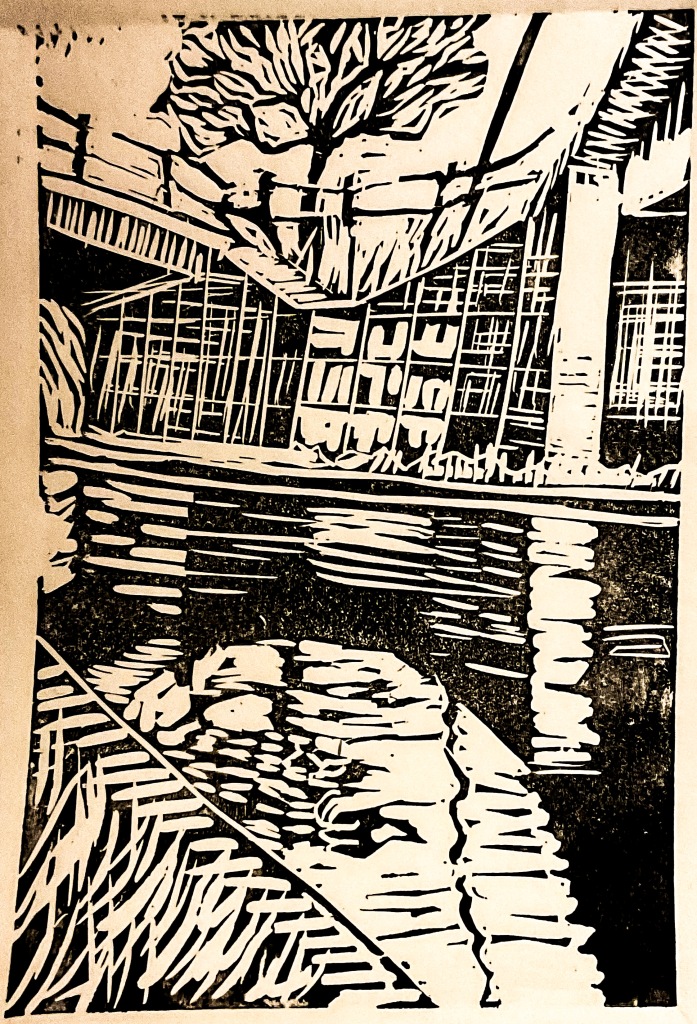In the 1927 film Metropolis, Maria captivates the workers through libidinous behaviour and leads them in a destructive orgy until, fearing for their families, they turn against her. Bound and burning, unrepentant, she is revealed to be a robot, a doll, a false prophet manipulated by the ruling class. The true Maria defends her honour on the cathedral roof until rescued by the hero.
This corny myth could be used to signify the whole history of the 20th century and from any perspective.
My aim was to deconstruct the lino printmaking process to reflect the destruction of the robot. I experimented with sprinkling the block with a little finely crushed salt but this near completely prevented transfer of ink to the paper. I also worked into the paper with white conte crayon, which works well as a resist with watercolour, but this failed to inhibit printing of the water-based, but much thicker, printing pigment. So I resorted to cutting back into the lino, extensively removing the image, then rebuilding it in gorilla glue. Activated with water, this adhesive froths and expands before drying. I sliced it level with the lino leaving a minutely cratered printing surface. I cut back into this to restore some of the lines. I varied the inking and pressure to get different effects.



























































